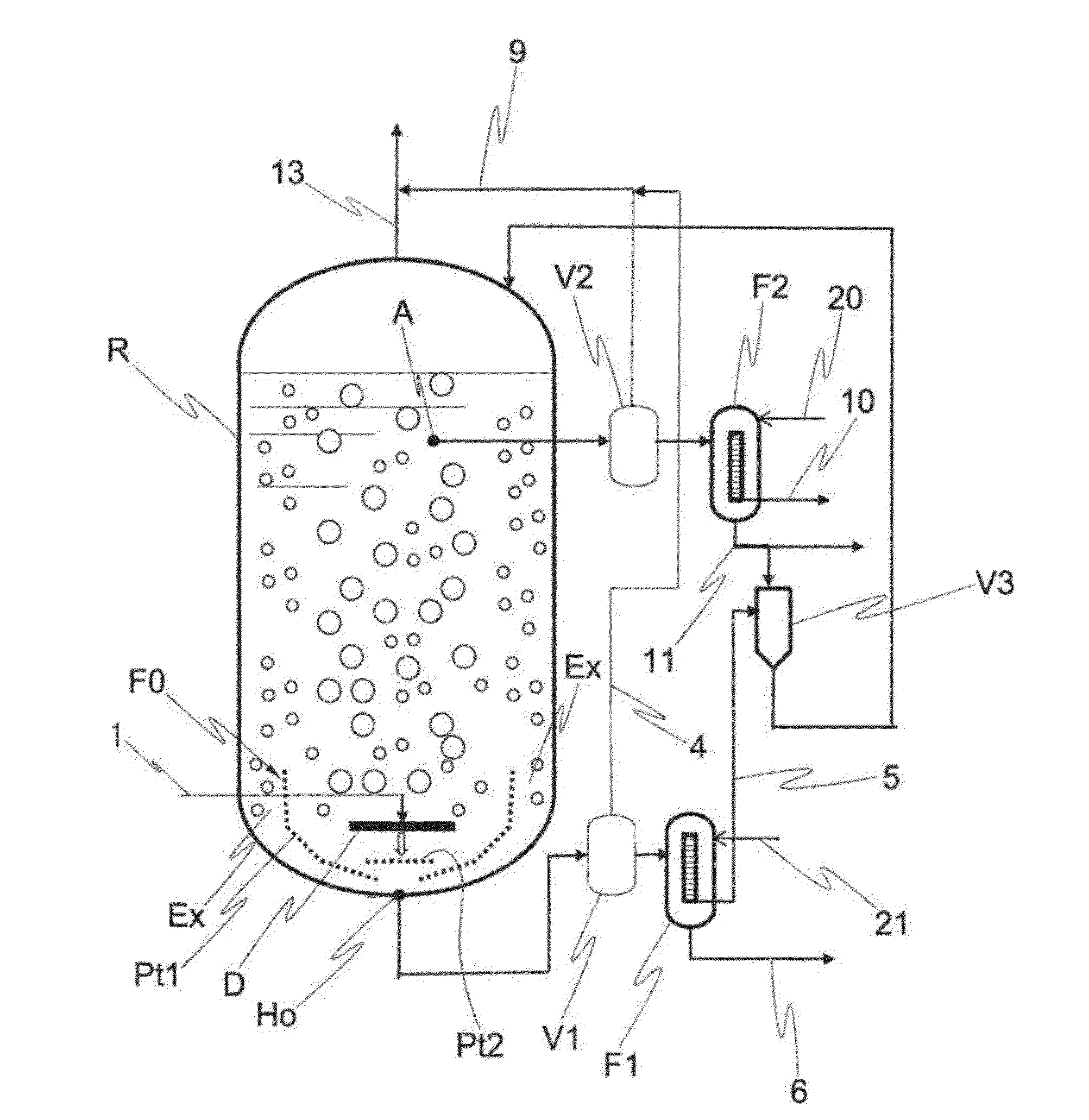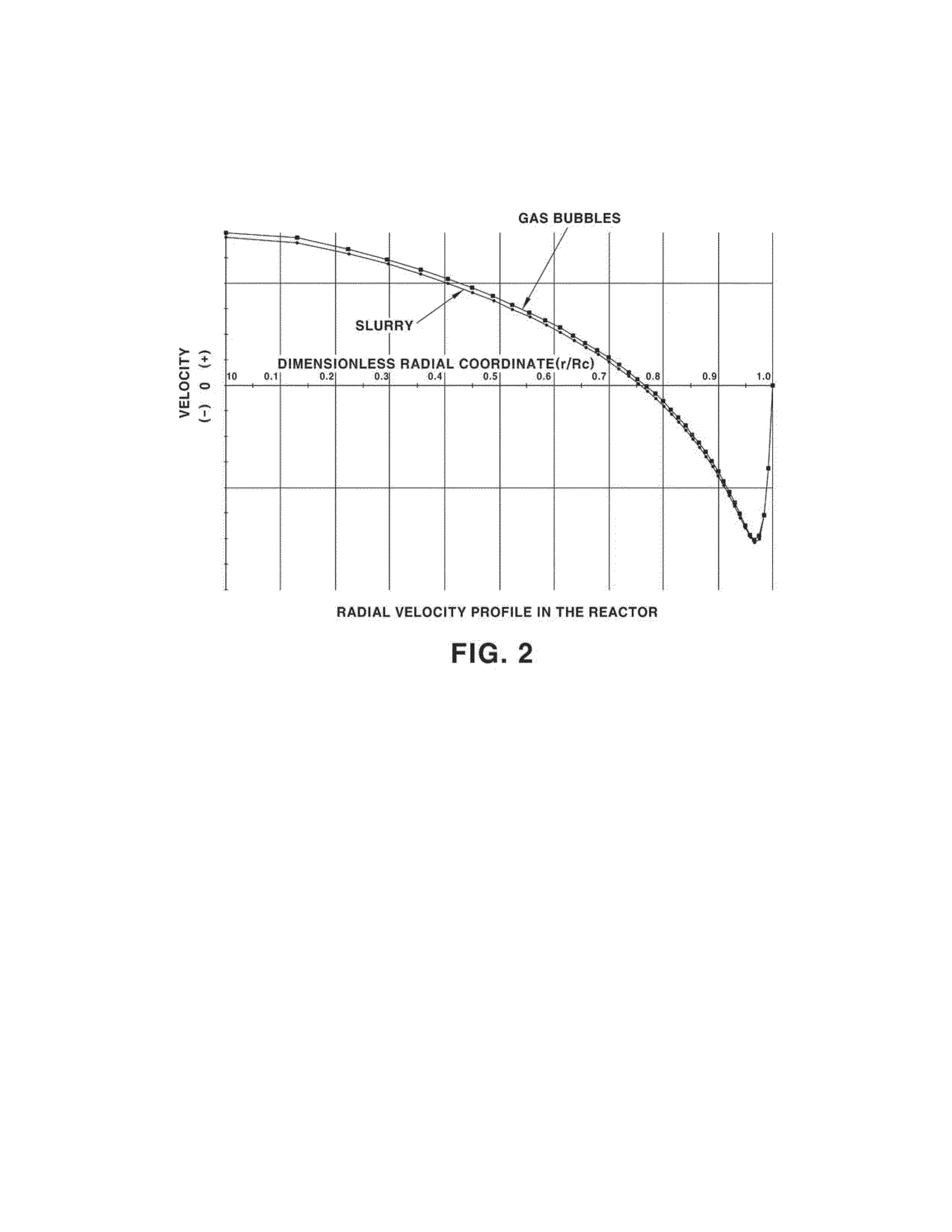Reaction device for producing hydrocarbons from synthesis gas
a technology of reaction device and hydrocarbon, which is applied in the direction of liquid-gas reaction process, hydrocarbon oil treatment, chemistry apparatus and processes, etc., can solve the problems of high hydrogen ratio, long life span, and high price of cobalt catalyst, and achieve the effect of stably promoting xtl
- Summary
- Abstract
- Description
- Claims
- Application Information
AI Technical Summary
Benefits of technology
Problems solved by technology
Method used
Image
Examples
Embodiment Construction
Technical Problem
[0019]The present invention is a result researched in order to solve a agglomeration phenomenon of the catalyst particles, which occurs in the slurry phase reactor and the catalyst separation method using the same in the related art, and an object thereof is to provide a reaction device for producing hydrocarbons from synthesis gas, in which an internal filter system for separating enlarged catalyst lumps due to the agglomeration is installed inside the reactor, and a separating device is separately disposed outside, such that it is possible to recirculate only particles having a size appropriate for performing F-T synthesis in the slurry phase, and additionally, it is possible to effectively discharge and process catalyst lumps aggregated due to a combination of fine catalyst particles, the fragmented catalyst particles, and the like with liquid hydrocarbon, co-produced water, and the like in the slurry phase reactor.
Technical Solution
[0020]In order to achieve the ...
PUM
 Login to View More
Login to View More Abstract
Description
Claims
Application Information
 Login to View More
Login to View More - R&D
- Intellectual Property
- Life Sciences
- Materials
- Tech Scout
- Unparalleled Data Quality
- Higher Quality Content
- 60% Fewer Hallucinations
Browse by: Latest US Patents, China's latest patents, Technical Efficacy Thesaurus, Application Domain, Technology Topic, Popular Technical Reports.
© 2025 PatSnap. All rights reserved.Legal|Privacy policy|Modern Slavery Act Transparency Statement|Sitemap|About US| Contact US: help@patsnap.com



